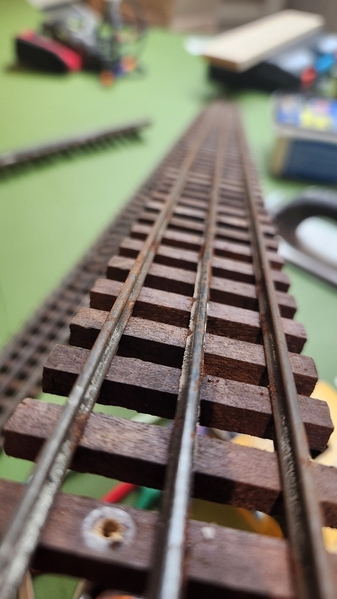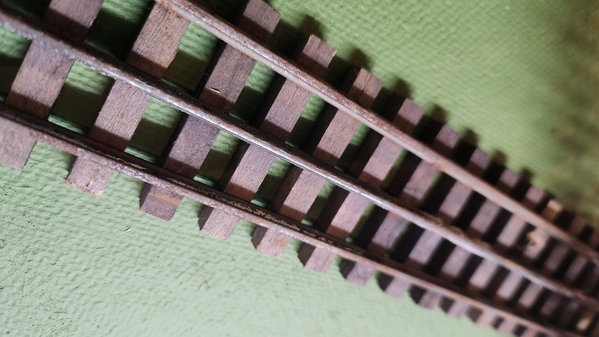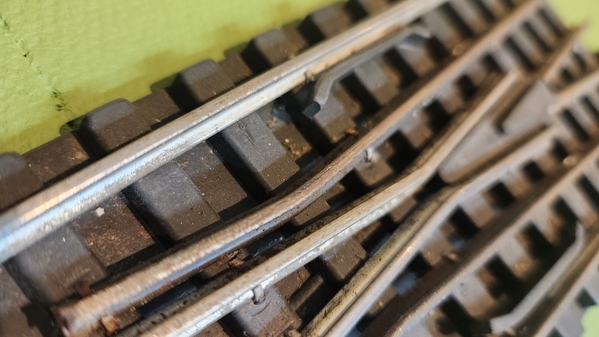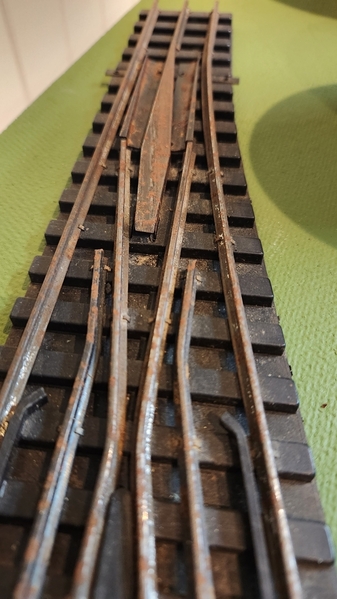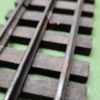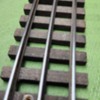I Have a LOT (several scale miles) of used Gargraves track and 20+ 100 switches and a box of unused flex with varied levels of rustiness (see pics) some of it is pretty rusty. I have been researching cleaning methods and I have watched some clips about an electrolysis tank, vinegar removal, rust removing chemicals and all the other common methods like scrubbing with scotch-brite pads, etc. I am wondering what experiences anybody has had any experience with cleaning rusty Gargraves track using an electrolysis tank or what methods worked for you. Scotchbrite pads have only been effective on the light surface rust. I also wonder if maybe sanding the rails with high grit sandpaper, like maybe - 800, 1000, 2000, 3000 grits would clean away the rust for good electric contact and then maybe give the rails the 'No-Ox' treatment to it. If the center rail gets shiny on the top, I don't really care, plus if I can clean this well my track will already be WELL weathered ![]()
![]()
The pics show some of the heavier rust, about half has light surface rust, the other half is like this.
So - finally, my question: What would you do to get this ready to use again?
a) scrap it - the track is dead, you're wasting your time.
b) scrub it with scotchbrite and if that don't work, chuck it.
c) electrolysis tank it (i wonder what will happen with the wooden ties?)
d) sand/polish it with high grit sandpaper.
e) something else... like?... suggestions, please.




